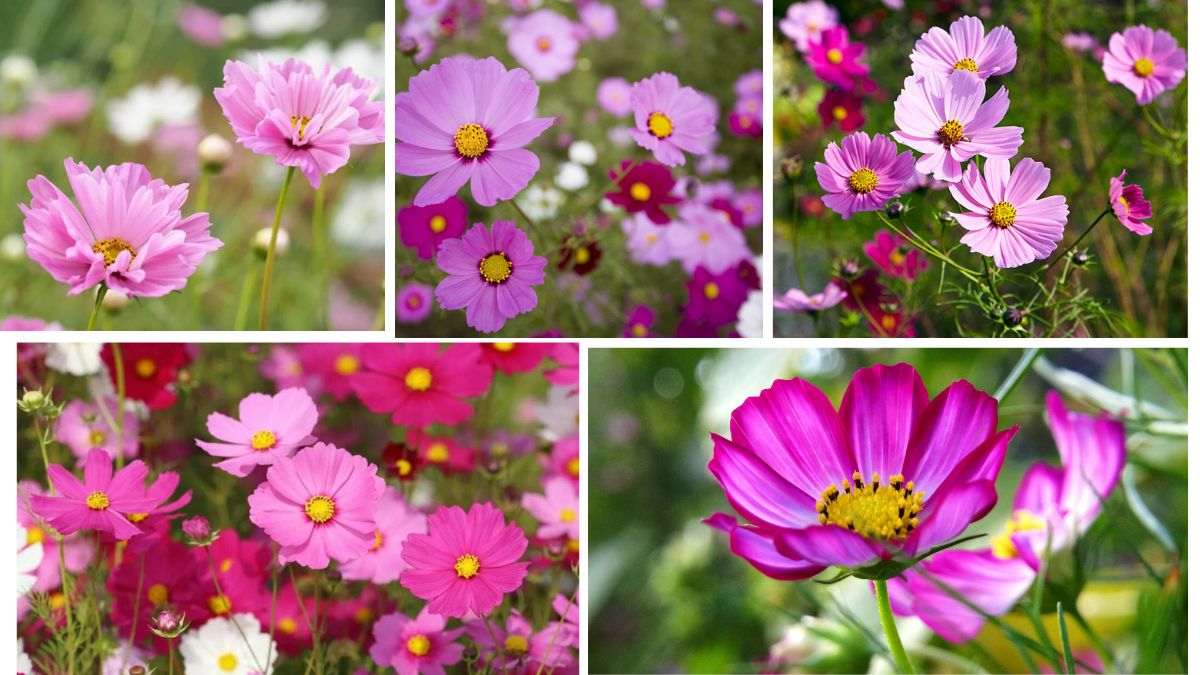Cosmos flowers, with their daisy-like petals and soft, feathery foliage, bring an air of lightness and grace to any garden. Their name, derived from the Greek word kosmos, means “order” or “harmony,” a fitting label for a flower that effortlessly blends vivid color and structure. Gardeners around the world prize cosmos for their carefree nature, vibrant blooms, and ability to thrive in various climates. In this article, we’ll explore the charm of cosmos and provide detailed, practical tips for growing these delightful flowers with ease and success.
Why Choose Cosmos?
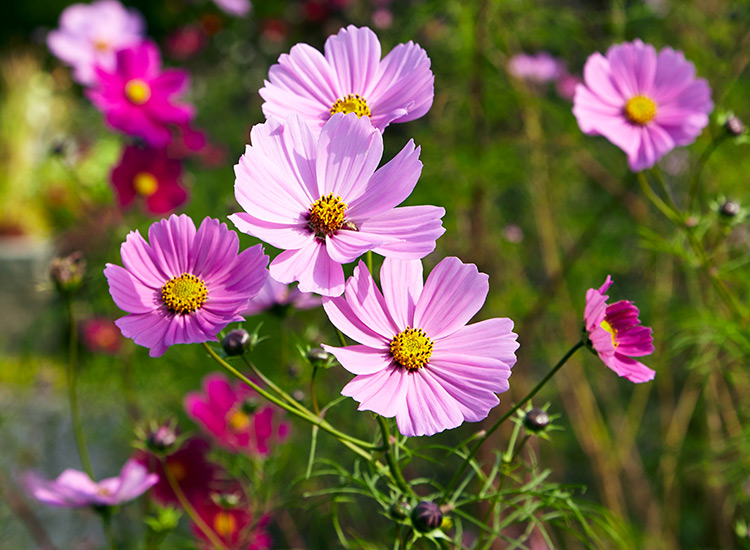
Cosmos flowers aren’t just pretty faces. They’re among the easiest annuals to grow, offering gardeners:
- Long-lasting blooms from early summer to fall.
- Minimal care requirements once established.
- Drought tolerance, making them ideal for low-maintenance and eco-friendly gardens.
- A magnet for pollinators—bees, butterflies, and birds love them!
- A wide array of colors including pink, white, orange, yellow, and maroon.
Whether you’re planting a cottage garden, a wildflower meadow, or a balcony container garden, cosmos add an element of charm and cheer that requires little effort to maintain.
Varieties of Cosmos
Understanding the main types of cosmos will help you choose the best one for your garden:
- Cosmos bipinnatus: The most popular variety, known for its delicate, fern-like foliage and tall, wispy stems. It comes in shades of pink, purple, white, and maroon.
- Cosmos sulphureus: Bright, fiery blooms in yellow, orange, and red. These are more heat-tolerant and bushier than bipinnatus.
- Cosmos atrosanguineus: Also known as Chocolate Cosmos, this variety features deep maroon flowers with a unique cocoa scent. It is perennial in warmer zones but more temperamental.
Ideal Growing Conditions
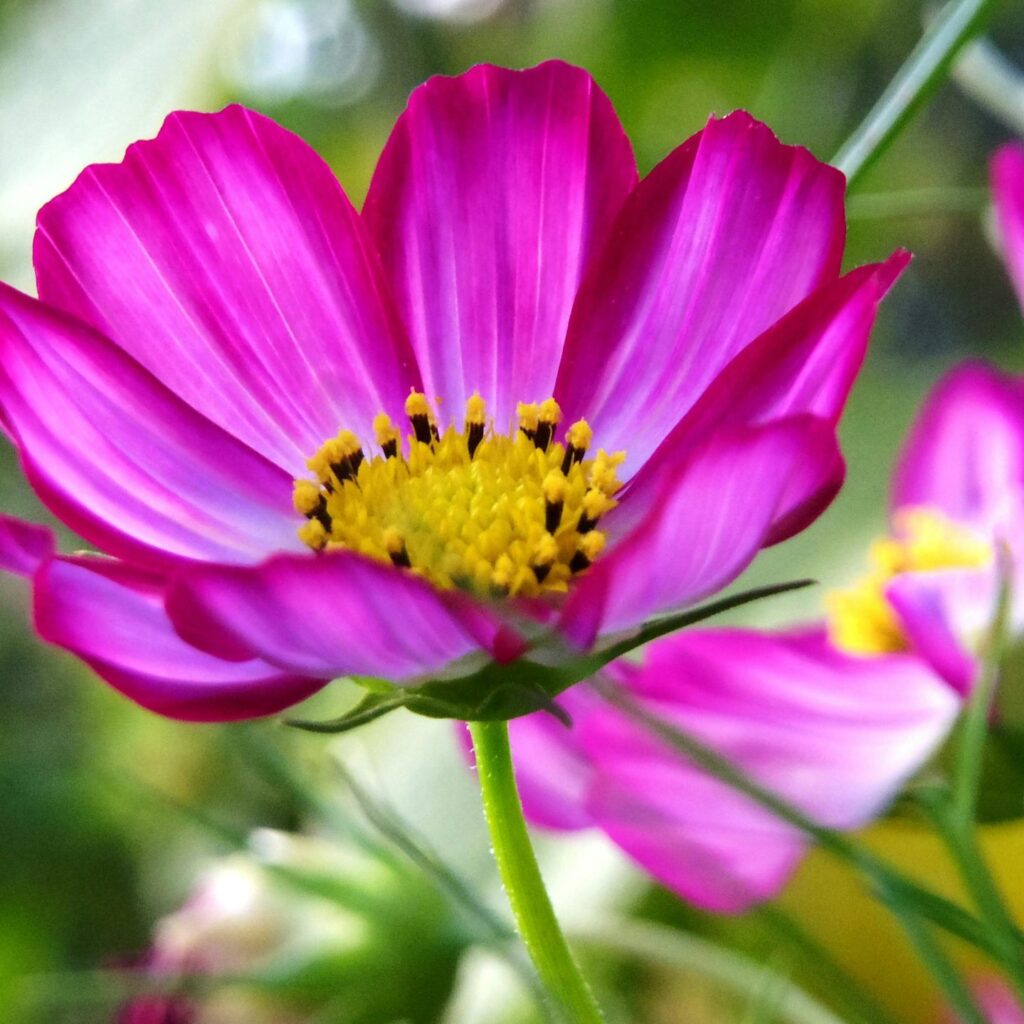
Cosmos are versatile but thrive best under specific conditions:
1. Sunlight
- Full sun is key. Cosmos require at least 6–8 hours of direct sunlight each day.
- While they can tolerate partial shade, it will reduce bloom quantity and plant vigor.
2. Soil
- Cosmos grow best in well-draining, average soil.
- Avoid overly rich soil or heavy fertilization, as this encourages leafy growth with fewer flowers.
- Slightly acidic to neutral soil pH (6.0–7.0) is ideal.
3. Watering
- Cosmos are drought-tolerant once established.
- Water moderately—allow the soil to dry out between watering sessions.
- Overwatering can lead to root rot or leggy growth.
Planting Cosmos: From Seeds to Splendor
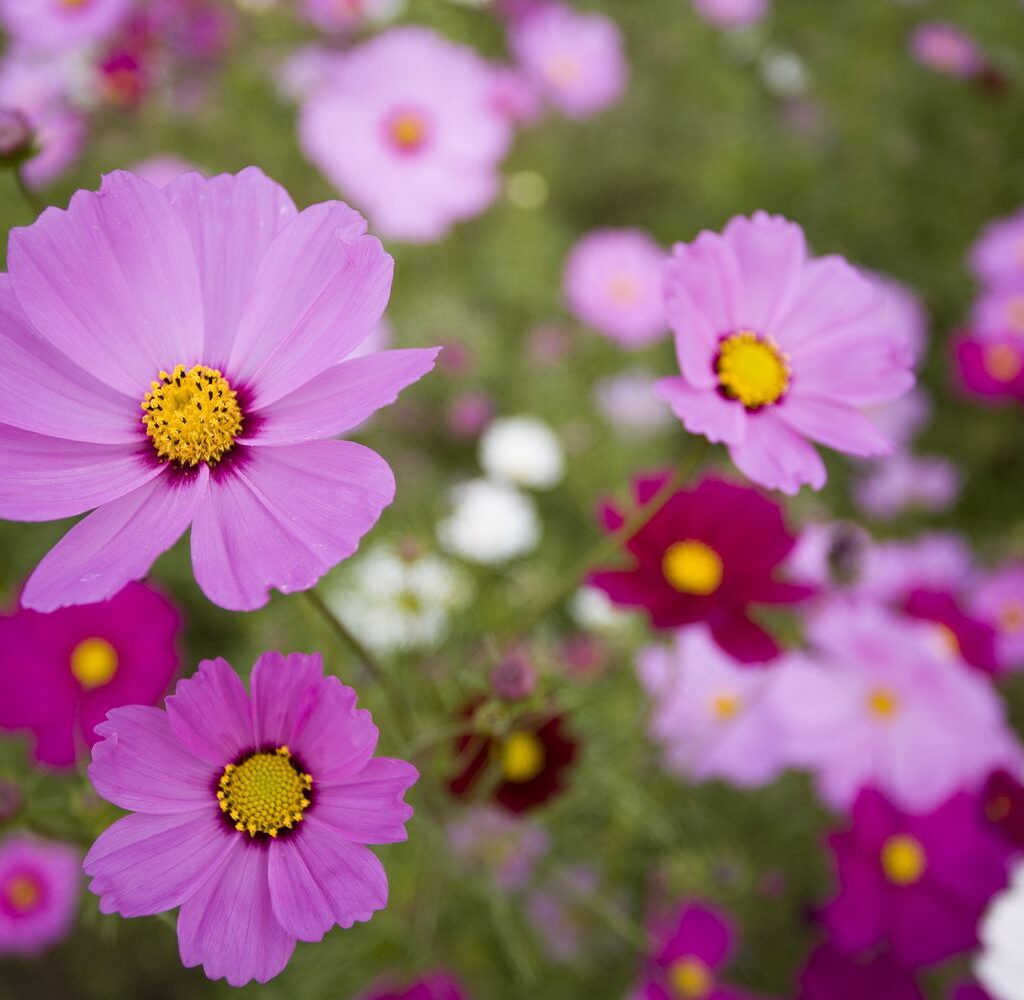
Cosmos are typically grown from seed and can be started indoors or sown directly into the ground.
1. Starting Indoors
- Begin seeds 4–6 weeks before the last frost.
- Use seed trays filled with light potting mix.
- Lightly cover the seeds with soil and keep moist until germination (5–10 days).
- Transplant when seedlings are 3–4 inches tall and all danger of frost has passed.
2. Direct Sowing
- Wait until after the last frost.
- Loosen the soil and rake smooth.
- Scatter seeds and lightly cover with soil (¼ inch deep).
- Thin seedlings to 12–18 inches apart for good air circulation and growth.
Caring for Your Cosmos
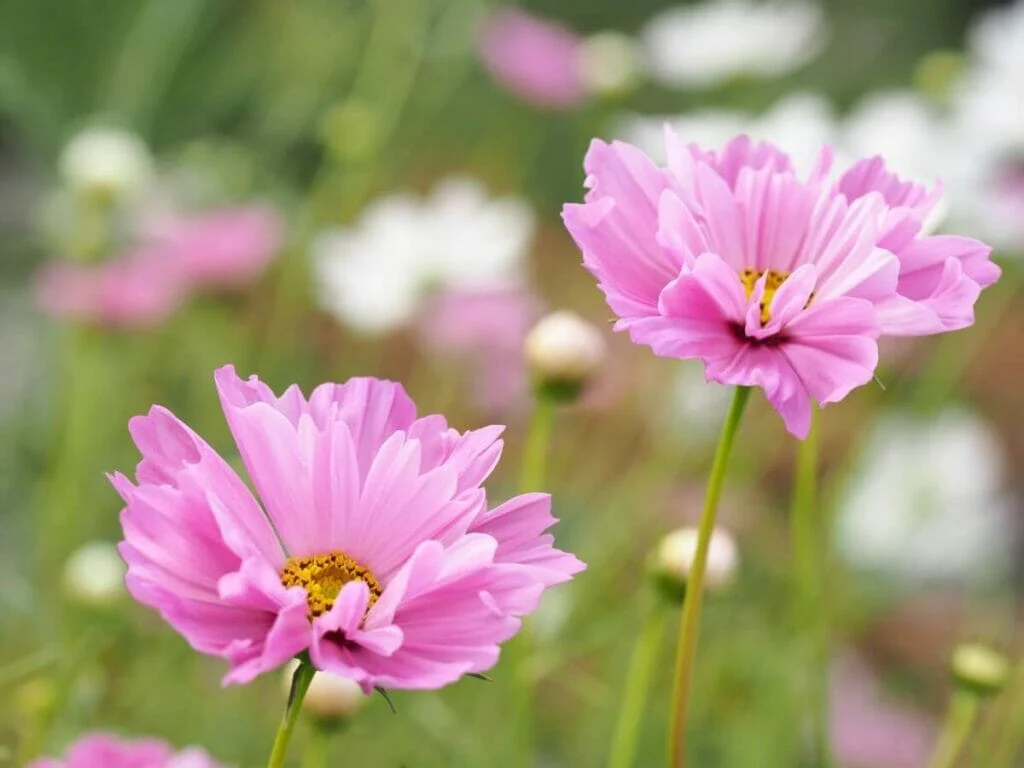
Once planted, cosmos require little maintenance but benefit from a few key practices:
1. Deadheading
- Regularly remove spent flowers to encourage continuous blooming.
- This also prevents excessive self-seeding unless you want natural reseeding for next season.
2. Staking
- Tall varieties may require staking or support, especially in windy areas.
- Place stakes early in the season to avoid root disruption later.
3. Fertilizing
- Use low-nitrogen fertilizers if needed.
- Too much nitrogen encourages lush foliage at the expense of flowers.
4. Pest and Disease Management
- Cosmos are generally pest-free, but keep an eye out for aphids or mildew.
- Provide adequate air circulation and avoid overhead watering to prevent fungal issues.
Growing Cosmos in Containers

Cosmos also flourish in containers, provided they get enough sun and space.
- Choose large pots (at least 12–14 inches deep).
- Use a light, well-draining mix—add perlite or sand if needed.
- Water when the top 1–2 inches of soil feel dry.
- Dwarf varieties like ‘Sonata’ or ‘Cosmic’ are perfect for container gardening.
Companion Plants for Cosmos
Pairing cosmos with the right plants can enhance your garden’s beauty and ecological value:
- Marigolds, zinnias, and sunflowers complement cosmos with vibrant colors.
- Basil, dill, and other herbs attract pollinators and deter pests.
- Echinacea and black-eyed Susans add a naturalistic, wildflower appeal.
Saving Seeds for Next Season
One of the joys of cosmos is their ability to reseed naturally, but you can also save seeds intentionally:
- Allow some blooms to mature and dry on the plant.
- When seed heads turn brown, clip and store in a paper bag.
- Let seeds dry completely before storing in a cool, dry place.
Label the variety and date—cosmos seeds remain viable for 2–3 years.
Cosmos as Cut Flowers
Cosmos make exceptional cut flowers with a long vase life.
- Cut in the morning when blooms are just opening.
- Remove lower leaves to prevent rotting in water.
- Change water every two days to extend freshness.
Their delicate, cheerful blooms add elegance to any indoor setting.
Eco-Friendly Gardening with Cosmos
Cosmos not only beautify your space but also contribute to a healthier planet:
- Their nectar-rich blooms attract pollinators, supporting bee and butterfly populations.
- Drought tolerance means less water usage.
- Their ability to thrive without heavy fertilization or pesticides promotes sustainable gardening practices.
By choosing cosmos, you’re supporting both beauty and biodiversity in your garden.
Conclusion: A Flower Full of Joy
Cosmos flowers are the perfect blend of charm, ease, and ecological benefit. With minimal care, you can enjoy months of vivid color and delicate blooms swaying in the breeze. Whether you’re a beginner or a seasoned gardener, cosmos offer carefree charm that’s hard to beat. By following these practical and inspiring tips, your cosmos will thrive and your garden will bloom with radiant beauty season after season.
